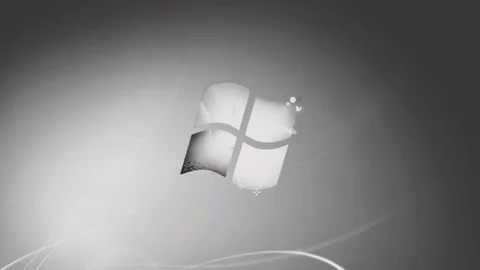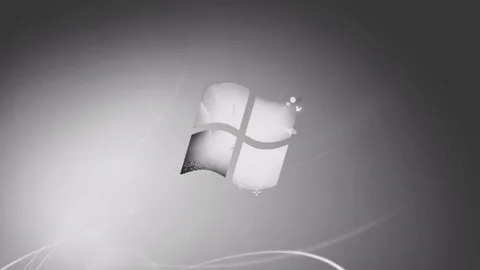End-of-Support: Navigating the Risks and Strategies for Transitioning
End-of-Support (EOS) marks a critical phase in the lifecycle of software products, signaling that the vendor will no longer offer regular updates, fixes, or technical assistance for a specific version of the software. While not as final as End-of-Life (EOL)—which typically marks the complete cessation of a product’s availability—EOS represents a crucial tipping point where organizations must take proactive steps to ensure continuity, security, and compliance.
This article explores what End-of-Support (EOS) is, why it occurs, and how businesses and users can manage the transition to minimize risk and maximize operational efficiency.
What is End-of-Support (EOS)?
End-of-Support (EOS) refers to the point at which a software vendor or developer ceases to provide support for a specific product version. This includes:
- Security updates and patches
- Bug fixes
- Technical support services
- Compatibility updates
While the software may still function after EOS, the lack of ongoing vendor support introduces significant risks, particularly in the areas of security vulnerabilities, compliance with industry standards, and technical issues that could arise from software defects.
EOS can apply to various types of software, such as operating systems (e.g., Windows or macOS), business applications, cloud platforms, or even hardware systems. In some cases, EOS occurs before the product reaches its End-of-Life (EOL), meaning that while the software is still in use, the vendor stops providing the necessary support to keep it running securely and efficiently.
Why Does End-of-Support Happen?
Software vendors eventually end support for older versions of their products for several reasons:
1. Lifecycle Management
Every software product has a natural lifecycle. As new versions of software are released, maintaining support for older versions becomes more resource-intensive. Vendors often discontinue support for earlier versions to focus on newer releases with better features, performance, and security. This helps vendors optimize resources for development, support, and quality assurance.
2. Security Concerns
Maintaining security updates for legacy versions requires continuous effort and resources. Older software often becomes harder to secure because the underlying architecture or technology may not align with current best practices. As a result, vendors focus on newer versions of software that are better equipped to handle modern security challenges.
3. Technological Advancements
Software and hardware environments evolve rapidly. Vendors may stop supporting older versions because they are no longer compatible with newer technologies, frameworks, or infrastructure. For example, older operating systems may not support new hardware or software integrations, which makes continued support impractical.

4. Market Demands
The demand for older versions of software often diminishes over time. As organizations adopt newer versions, the pool of users relying on outdated versions shrinks. Vendors prioritize developing new features and improving user experiences for the majority of their user base, leaving behind legacy versions that have fewer active users.
5. Cost of Support
Providing ongoing support for outdated software versions is costly. Vendors must allocate resources (e.g., engineers, customer support staff) to address issues specific to older versions, which may not be economically viable once the version’s user base becomes smaller.
Risks of Using Software After EOS
Using software after it reaches End-of-Support can introduce several risks that could negatively impact an organization’s operations, security, and compliance.
1. Security Vulnerabilities
The most significant risk after EOS is the lack of security updates. As vulnerabilities are discovered in the software, they will not be patched or addressed, leaving the system exposed to cyberattacks, data breaches, or malware infections. This can be particularly dangerous for enterprise systems or software that handles sensitive data, such as customer information or financial records.
For example, Windows Server 2008 reached EOS in January 2020, and businesses that continued to use it after this date became more vulnerable to security exploits, as no new security patches or fixes were provided.
2. Compliance Risks
Many industries are governed by strict regulatory frameworks that require businesses to maintain specific security standards (e.g., HIPAA, GDPR, PCI-DSS). Using software after EOS may result in non-compliance, especially in sectors like healthcare, finance, and government. The absence of security patches and fixes for known vulnerabilities can lead to violations of these standards and result in significant fines, legal consequences, or loss of business reputation.
3. Operational Disruption
Without vendor support, any issues that arise with EOS software—whether they’re performance-related, compatibility issues, or critical bugs—will go unresolved. Organizations may experience operational disruptions that affect productivity and customer satisfaction. The lack of support also makes it harder to troubleshoot issues effectively, as solutions from the vendor will no longer be available.
4. Integration Challenges
EOS software may not be compatible with modern applications, tools, or infrastructure. Over time, software and hardware ecosystems evolve, and continued use of outdated versions can lead to integration challenges, incompatibility issues, and failure to leverage the benefits of newer technologies.
For example, older CRM or ERP systems may not integrate with modern communication platforms, financial systems, or cloud storage solutions, hindering business agility and innovation.
5. Increased Maintenance Costs
As software ages, maintaining it becomes increasingly difficult. Organizations may have to rely on specialized expertise or third-party vendors to resolve issues, which can lead to higher maintenance costs. The lack of updates and support may also require businesses to invest in temporary fixes or workarounds that may not be sustainable in the long run.
How to Manage the Transition After End-of-Support
To minimize the risks associated with EOS software, organizations must have a clear strategy for transitioning away from unsupported software. Below are some best practices for managing EOS transitions:
1. Plan Early for Upgrades
Proactively planning for upgrades or migration before software reaches EOS is crucial. Vendors typically announce EOS dates in advance, so organizations should start the upgrade process well ahead of time to ensure a smooth transition. This gives teams ample time for:
- Testing new versions or alternative solutions
- Training users on new features and workflows
- Ensuring compatibility with existing systems and infrastructure
2. Evaluate New Versions or Alternatives
If upgrading to a newer version of the same product is not feasible or cost-effective, evaluate alternative software solutions that meet your business needs. Many software providers release newer versions with enhanced features and improved security, making them ideal choices for organizations still using EOS software.
In some cases, migration to entirely new platforms—such as cloud-based applications—may be a viable option, offering better scalability, security, and performance.
3. Consider Extended Support Options
Some vendors offer extended support programs for products that have reached EOS. These programs often provide security patches and critical updates for a limited period, usually at an additional cost. If an immediate upgrade or migration isn’t feasible, extended support can provide more time to plan for the transition.
For example, Microsoft offers extended security updates (ESUs) for Windows Server and Windows 7 after the standard EOS date, which provides organizations with additional time to complete their upgrades.
4. Invest in Security Tools and Monitoring
If using EOS software is unavoidable for a time, take additional measures to secure your systems. Implement comprehensive security tools such as firewalls, intrusion detection systems, antivirus software, and network segmentation to protect systems running EOS software. Regularly monitor these systems for any signs of vulnerabilities or breaches.
5. Maintain Backups and Disaster Recovery Plans
When using EOS software, it’s critical to maintain robust backup and disaster recovery plans. Ensure that regular backups of critical systems and data are taken and stored securely. This provides a safeguard in case an issue arises due to the lack of support for your software.
6. Prepare for Migration
Migration to new software or platforms can be complex, particularly for large organizations with legacy systems. Start preparing for migration as early as possible, considering factors such as:
- Data migration: How will data be transferred from the EOS software to the new system?
- User adoption: How will employees be trained to use the new system?
- Customization: Will the new software need to be customized to meet specific business needs?
Conclusion
End-of-Support (EOS) marks a crucial juncture in the software lifecycle, where the absence of vendor updates and support poses significant risks to security, compliance, and operational stability. By proactively managing EOS transitions—through planning upgrades, evaluating alternatives, considering extended support, and enhancing security—organizations can minimize the impact of EOS and ensure their software remains secure, compatible, and functional.
Preparing for EOS is a strategic process that requires foresight and careful planning. Early intervention, risk assessment, and future-proofing your systems can help ensure a smooth transition to newer technologies, avoiding costly disruptions and ensuring continued business success.

